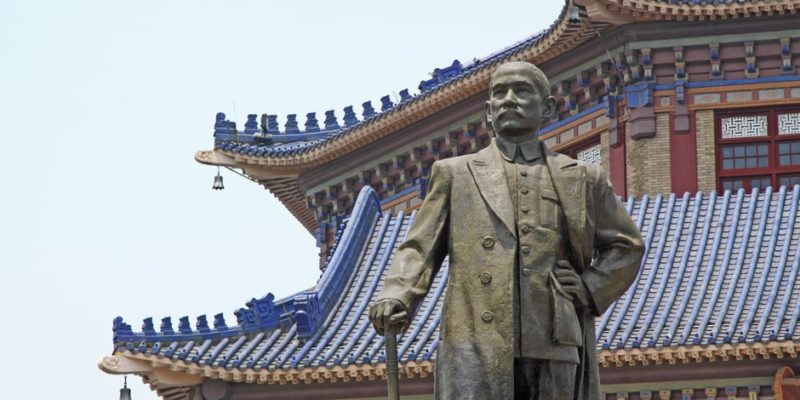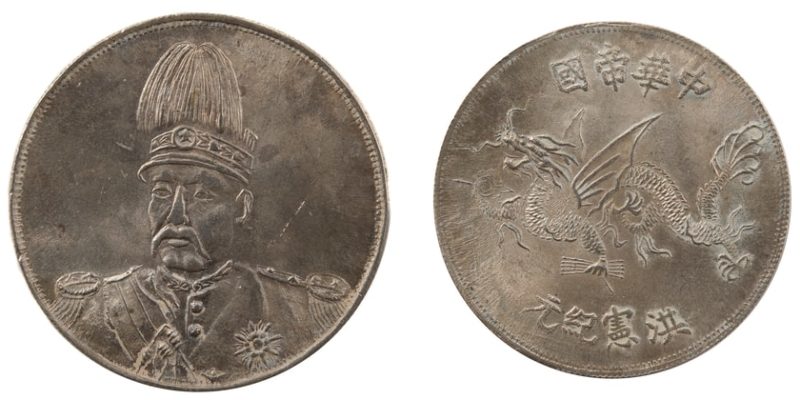We explain what the Chinese Revolution of 1911 or Xinhai Revolution was, its causes, consequences and main events.

What was the Chinese Revolution of 1911?
The Chinese Revolution of 1911, also known as the Xinhai Revolution or First Chinese Revolution, It was a nationalist and republican revolutionary process that broke out in imperial China at the beginning of the 20th century. This revolution overthrew the last Chinese imperial dynasty (the Qing dynasty) and established the Republic of China in its place.
This insurrection was known as Xinhai because that was the name that corresponded to the year 1911 according to the traditional Chinese calendar. Although studied as a single historical event, the Chinese Revolution of 1911 consisted of numerous uprisings and revolts.
The event that triggered the Chinese Revolution was the Wuchang Uprising on October 10, 1911, carried out by a group of revolutionaries. The leader of this movement was Sun Yat-sen, who, from exile in the United States after a failed rebellion attempt, gained international support for his movement.
The revolution spread to other areas of the country and on January 1, 1912, the Republic of China was proclaimed. The last emperor abdicated on February 12, 1912.
Key points
- The Chinese Revolution of 1911 was a nationalist insurrection that ended more than two thousand years of imperial rule and established a republic.
- Among its causes were discontent with the Qing dynasty, the poverty of the peasantry, and the desire of nationalists and republicans to modernize the country.
- One of the main leaders of the Chinese Revolution was Sun Yat-sen, who briefly held the presidency of the republic in 1912.
- After the proclamation of the Republic, a long period of political instability and internal conflicts began.
See also: Chinese Communist Revolution
Background to the Chinese Revolution of 1911

The Chinese imperial monarchy had more than two thousand years of history. However, during the 19th century, was crossed by conflicts and difficulties mainly due to foreign interference whose governments and merchants coveted Chinese luxury goods such as silk and porcelain.
Furthermore, Great Britain encouraged the illegal export of opium to China from its colonies, something that the Chinese government tried to stop to reduce the addiction of its population and the outflow of money abroad. This conflict caused two opium wars against Great Britain and France (1839-1842 and 1856-1860), in which China was defeated and was left in a subordinate position with respect to the Western powers.
The same happened with the first Sino-Japanese War (1894-1895), in which China lost territories to the Empire of Japan. Later there was the Boxer Uprising (1899-1901), in which a group of Chinese nationalists rose up against the foreigners living in China and were finally put down by the armies of eight foreign powers.
These conflicts greatly punished the Chinese people and eroded the legitimacy of the Qing dynasty.
On the other hand, European and American influences brought republican ideas to China, which were adopted by figures such as Sun Yat-sen and his followers in the Tongmenghui nationalist movement, which after the 1911 revolution became the Chinese Nationalist Party ( known as Kuomintang).
Causes of the Chinese Revolution of 1911
The main causes of the Chinese Revolution of 1911 were the conditions of misery to which the peasantry and other strata of Chinese society were subjected, the intervention policies of foreign powers in China, which protected their own economic interests through concessions to the detriment of the Chinese people, and the discredit of the imperial Qing dynasty.
Another important cause was the spread of some political ideas from the Western world, such as nationalism, republicanism and democracy, among certain sectors of Chinese society. This favored the creation of revolutionary groups and allowed the Wuchang Uprising to take place, which triggered the revolution.
1. Poor living conditions
Under the Chinese imperial monarchy, Chinese society (especially the peasantry) lived in conditions of poverty and oppression.
2. The interference of foreign powers
Foreign powers had meddled in Chinese politics and society by imposing conditions that favored their own interests.
The most characteristic example was the European, American and Japanese concessions in Chinese cities. These areas were administered by foreigners, who sought to defend their commercial privileges.
This caused numerous internal uprisings that were repressed by the imperial monarchy, leading to the organization of groups that operated clandestinely.
3. The loss of legitimacy of the imperial dynasty
Due to military defeats in the 19th century and subordination to foreign interests, the imperial Qing dynasty had lost legitimacy.
In addition, the dynasty was accused of corruption, of being responsible for the deteriorating living conditions of the population and of harming local investors through the mismanagement of projects such as the Hukuang railway.
4. Western political ideas
New Western political ideas brought many Chinese leaders closer to nationalism, republicanism and democracy.
This encouraged the organization of revolutionary movements that affirmed the need to implement political and social reforms to modernize China, which involved overthrowing the imperial monarchy.
5. The Wuchang Uprising
The Tongmenghui nationalist movement, led by Sun Yat-sen, carried out an uprising in the town of Wuchang.
This rebellion began on October 10, 1911 after the Chinese authorities discovered, following the explosion of a bomb in the city of Hankou, a conspiracy underway within the Wuchang army.
Instead of surrendering, the conspirators resisted by force, igniting revolutionary momentum that spread across China and sparked a widespread uprising against Qing authority.
Consequences of the Chinese Revolution of 1911
The main consequences of the Chinese Revolution of 1911 were:
- The triumph of the revolutionary movement. On October 12, 1911, the revolutionaries took Hanyang and Hankou. As the uprisings spread rapidly through southern China, the authorities were slow to react and, although they entrusted the task of appeasement to the military man Yuan Shikai, hero of the first Sino-Japanese War, it proved impossible to quell the uprising.
- The proclamation of the Republic of China. Initially, a series of demands were sent to the Qing, demanding the establishment of a parliamentary system. Yuan Shikai took over as prime minister of the empire but it was impossible to reach a consensus. On November 30, 1911, the revolutionaries took Nanjing and on January 1, 1912, the Republic of China was proclaimed, whose first president was Sun Yat-sen, who had returned from the United States.
- The abdication of the last Chinese emperor. On February 12, 1912, the last Qing emperor, called Puyi and known as “Emperor Xuantong,” at just six years old abdicated under pressure from Prime Minister Yuan Shikai, who in exchange for his cooperation with the revolutionaries became exercise the presidency of the Republic.
- The promulgation of a republican Constitution. In March 1912, the Provisional Constitution of the Republic of China was promulgated and parliamentary elections were called within ten months. This event consolidated the end of imperial China but opened a new period of divisions and conflicts.
- The birth of the Kuomintang. After the founding of the Republic of China, Sun Yat-sen reorganized the nationalist movement and created the Kuomintang or Chinese Nationalist Party. This party played an important role in the Chinese civil war (1927-1936 and 1945-1949), in which the Nationalist government and the Kuomintang, led at that time by Chiang Kai-shek, clashed with the Communist Party of China led by Mao Zedong.
The imperial resurgence

In 1913 elections were held as dictated by the Constitution, but the then president, the military man Yuan Shikai, refused to accept the limitations on his power established by the legislative assembly, and governed de facto. In 1915 Yuan Shikai restored the imperial character to the government of China and proclaimed himself emperor.
However, Just three months later he was forced to abolish the imperial institution pressured by internal dissent, even from those who had initially supported him. He died on June 6, 1916.
Although the Republic was restored, a period of political instability and regional and factional conflicts began since then.
References
- Britannica, Encyclopaedia (2023). Chinese Revolution. Encyclopedia Britannica. https://www.britannica.com/
- Roberts, J. A. G. (2008). History of China. Publications of the University of Valencia.
- United States Department of State (sf). The Chinese Revolution of 1911. Office of the Historian. https://history.state.gov/





